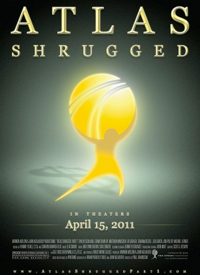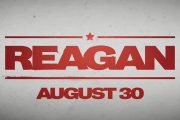
The movie Atlas Shrugged: Part I, set in the year 2016 and adapted from Ayn Rand’s famous novel published in 1957, accomplishes much of what the author intended in her book: a beautiful, poignant, painful expression of the conflict between egalitarianism and the right to own private property. The story is well known, as the novel was noted recently by the Library of Congress “as the most influential book read in America,” right behind the Bible itself. Dagny Taggart (Taylor Schilling) owns a struggling railroad company that is being sabotaged by her brother; Hank Rearden (Grant Bowler) has developed a metal for railroad rails that is far superior to anything on the market; and their attempt to do business for their mutual benefit is being thwarted by all manner of government agencies and crony capitalists who see the threat to their own businesses if Dagny and Hank succeed.
Although the movie was produced under nearly impossible financial and timing circumstances (a paltry $10 million budget and a deadline to start filming just two days before the producer’s option expired), the actors give more flesh and vitality to their parts than Rand portrayed in her book. Stiff cardboard silhouettes in the novel, the movie’s Dagny and Hank take on fullness of character, even when employing many of Rand’s lines that were intended for print. Rand was able to develop her objectivist philosophy by taking time in her book to explore, expand, and preach the stark difference between the freedom of the entrepreneur and the dull, drab weariness of the fascist economy that destroys opportunity, wealth, and freedom while claiming to “equalize opportunity” for everyone. Movie director Paul Johannson did not have the freedom to develop Rand’s philosophy on screen, but trappings are there for viewers willing to watch and listen closely — and of course think.
Detecting the message shouldn’t be hard for those already familiar with Rand’s works and her objectivist philosophy. In fact, at the showing this reviewer attended, followers in the audience were only too ready to express pleasure or unhappiness at certain points in the film. For instance, when one was asked, “Who will run the businesses if John Galt succeeds in taking the best owners and managers away?” the predictable statist answer was “Government bureaucrats, of course!” Great laughter greeted that bit of nonsense. In another scene, a union thug threatened Dagny with the loss of her labor force, claiming that her newly rebuilt railroad line was unsafe and the workers “had a right to safety on the job.” Dagny responded, “I offer them work freely. If they want the work, fine. But if I am forced to follow your rules, there won’t be any jobs. In any event, I will never allow any of your union members to work for me!” The audience erupted in applause.
This movie is for the faithful. It will remind them of why they slogged their way through the 1,100-page novel. They will enjoy the pure, unadulterated energy and thrill of entrepreneurship that comes clearly through. As Part I of the planned three-part movie series ends, the enigmatic question, “Who is John Galt?” slowly becomes clear.
Related article:



